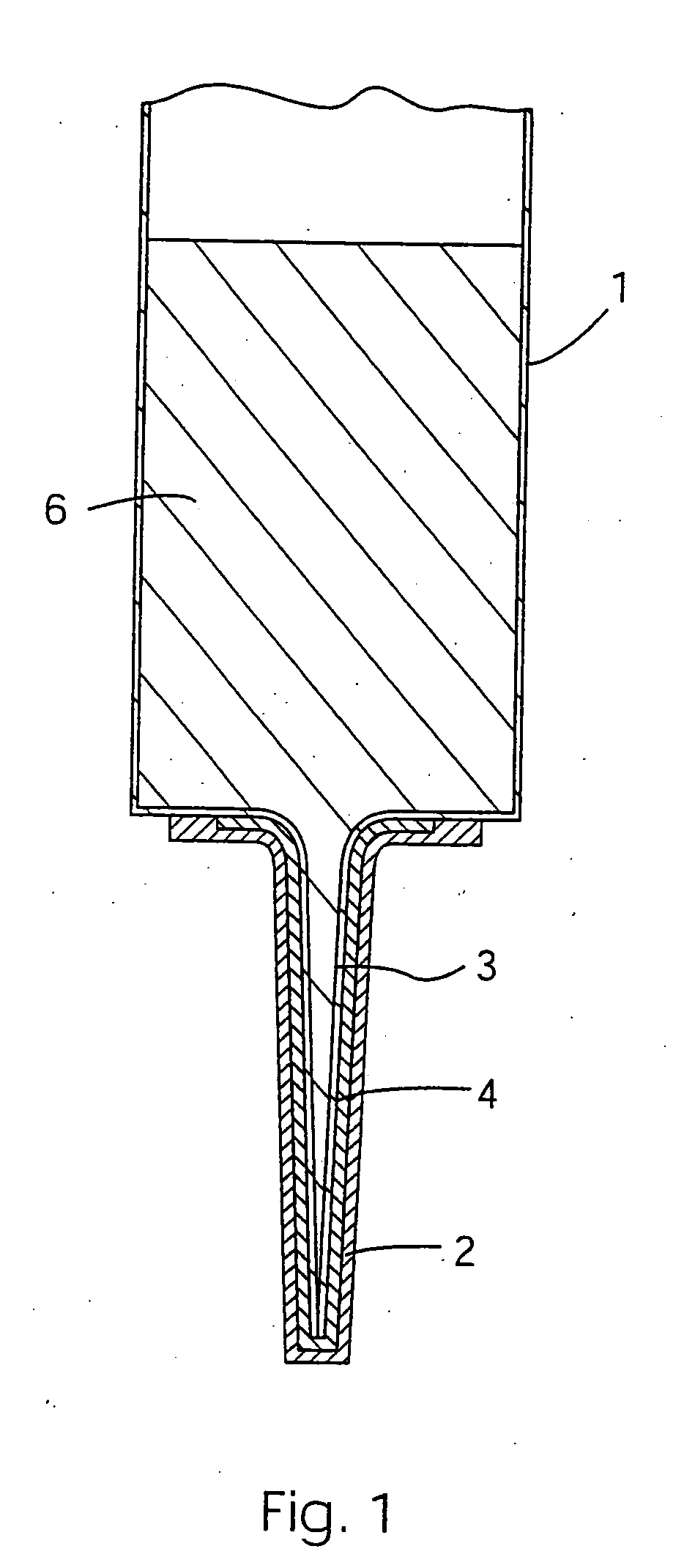Bio-security system
- Summary
- Abstract
- Description
- Claims
- Application Information
AI Technical Summary
Benefits of technology
Problems solved by technology
Method used
Image
Examples
Embodiment Construction
[0037] The invention provides a system which substantially prevents contamination of a teat, in particular a bovine teat, during administration of a sealant product in a mastitis preventative treatment. A sterilising agent is deliverable into the teat or streak canal directly in advance of a mastitis preventative treatment to reduce the risk of introducing mastitis-causing organisms when treating the teat. The invention may be used with other mastitis preventing products, however the invention is particularly important when using a product that does not itself contain an anti-infective substance.
[0038] The method of the invention directly delivers a sterilising agent into the teat or streak canal ahead of the sealant thereby ensuring that accidentally introduced organisms are killed and do not cause mastitis. The sterilising agent is carried into the teat ahead of the sealant such that the sealant is delivered to the teat through the sterilising agent.
[0039] Referring to the drawi...
PUM
| Property | Measurement | Unit |
|---|---|---|
| Volume | aaaaa | aaaaa |
| Volume | aaaaa | aaaaa |
| Volume | aaaaa | aaaaa |
Abstract
Description
Claims
Application Information
 Login to View More
Login to View More - Generate Ideas
- Intellectual Property
- Life Sciences
- Materials
- Tech Scout
- Unparalleled Data Quality
- Higher Quality Content
- 60% Fewer Hallucinations
Browse by: Latest US Patents, China's latest patents, Technical Efficacy Thesaurus, Application Domain, Technology Topic, Popular Technical Reports.
© 2025 PatSnap. All rights reserved.Legal|Privacy policy|Modern Slavery Act Transparency Statement|Sitemap|About US| Contact US: help@patsnap.com



